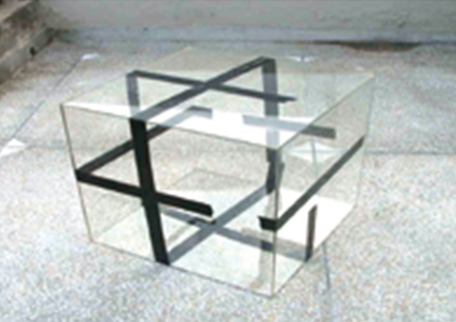Mohammad Ali Talpur
This is a collection of articles archived for the excellence of their content. Readers will be able to edit existing articles and post new articles directly |
Mohammad Ali Talpur
The 1998 NCA graduate who was selected for inclusion in the Best of Discovery exhibition at the inaugural Shanghai Contemporary Art Fair last year, teaches at the National College of Arts. His work has been displayed in the subcontinent and the UK. He is married to another artist of repute, Nadia Khawaja, who too is an academician.
“Mohammad Ali Talpur’s minimal meditative works seemed to be a perfect counterpoint to Huma Mulji’s verve and wit. The ‘essence’ is the line. As he puts it, “the act of repeatedly making lines is similar to being obsessed with achieving a perfect line”.” His installation is a huge transparent cube, made up of 125 small cubes, each measuring 2 ft by 2 ft, with lines gliding across the surfaces, taking one on journeys never ending.”
For the Art Dubai fair display, the artist says: “The installed piece is a huge cube that consists of 125 smaller cubes. Each piece measures 2 feet by 2 feet. The exhibit is about repeating one element in order to construct a combined/complex object. Just like a brick, which makes a wall or an individual that forms a society, every single element in my work contributes to the completion of the whole object… The overlapping and broken lines on a transparent surface/material create a sense of depth and abstraction inside a limited space, thus relieving its physical boundaries, or call it limitations, if you like.”
Top: Untitled, transparent cube; sketch of the smaller cubes within the bigger cube (left)


